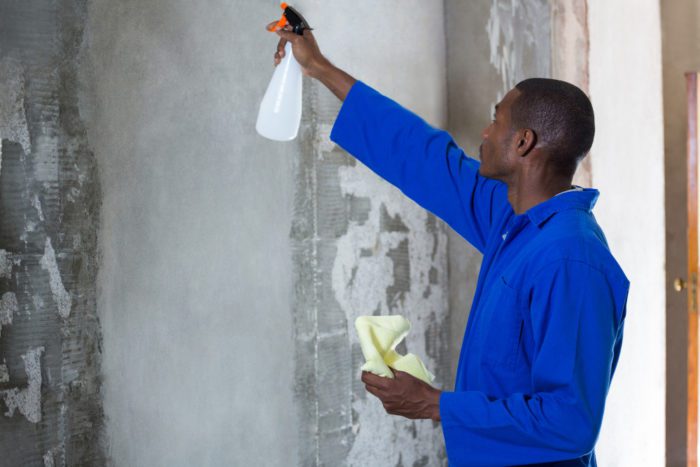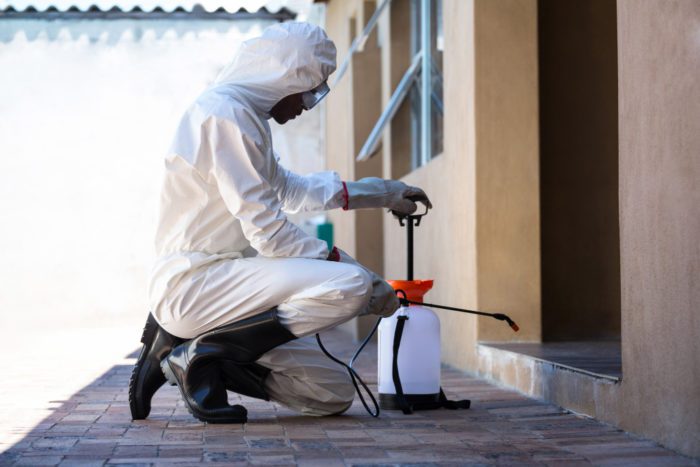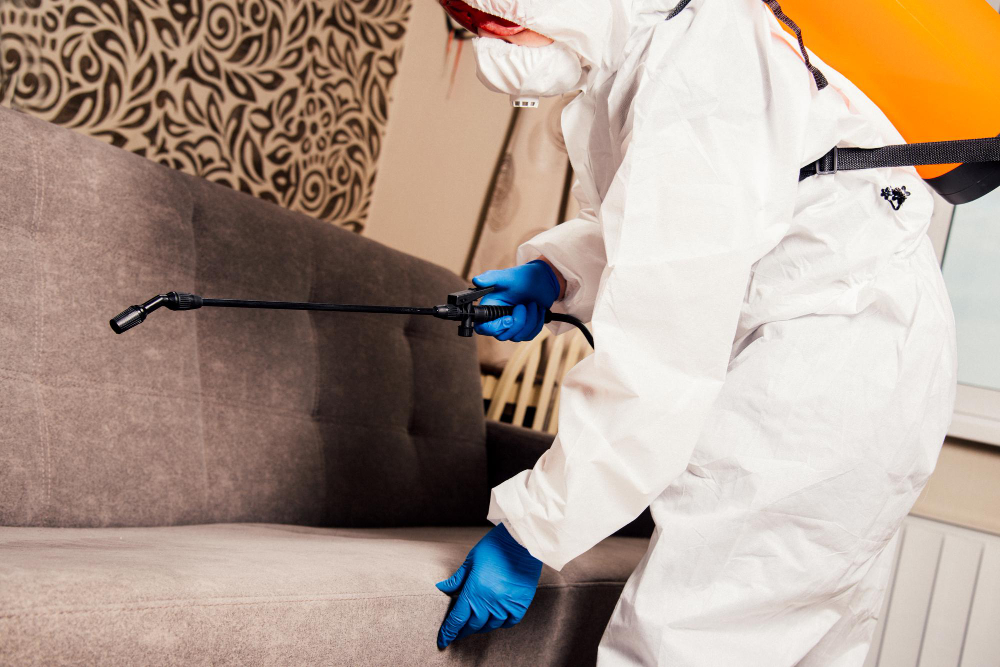Termites can be found in any household. The problem is what to do with them?
Should we treat them with pesticides? When do we call the pest control team? What should be done and how should it be executed?
These are the questions that often come to mind and this article is going to answer them all. This article covers everything.
Identifying a termite infestation, its elimination, DIY methods, professional treatments, and finally the preventive measures, you will find it all here.
Let’s begin with the identification of the infestation.
Locating the Infestation

Eliminating visible termites is never enough. You have to check for the presence of termites that are hidden in their nest to prevent future termite attacks.
But how can it be done? How will we get the idea that there are more termites and the house needs to be treated?
For this, we are listing some signs of infestation that will confirm the presence of termites in your house other than those that are visible.
Mud Tubes
These are the most common damage done by subterranean termites. These termites live underground and travel through soil. They use these tubes for traveling purposes.
The size of these tubes is about the size of coins and is usually found in the exterior and interior of walls.
The presence of mud tubes means subterranean termites are there and you need to have a treatment as soon as possible as they may cause a lot of structural damage to your roofs and walls.
Hollow Sounding Timber
Termites consume cellulose. They get these through wooden structures. If your wooden structures sound hollow when you knock, then it is likely that termites have eaten your wooden structure.
They consume the wood from inside and leave a thin layer of paint outside.
Termite Droppings
The droppings are also known as frass. After consuming wood, termites create holes in the structure to get rid of their droppings through them.
These droppings are tiny, about 0.04 inches long. The color depends upon the type of wood termites eat.
Identifying them is a tough task as it resembles sawdust. These droppings usually signal the presence of drywood termites as subterranean termites use their dropping in the creation of mud tubes.
Drywood termites create kick-out holes in wood to push their droppings out of the nest.
Treatment for a Small Infestation

The extent of damage tells us how big the infestation is. If all the signs mentioned above are present in a small amount or only 1-2 signs are there, that means the infestation is small.
Treatment of small infestations can be done yourself. It will not require a lot of effort. We are listing some homemade termite killers, which will help you in treating termites you encounter.
Vinegar
Making a termite killer out of vinegar is very easy. You just have to mix 2 lemons with a half cup of vinegar. Mix it up and pour it into a spraying bottle. Spray it into infected areas and on visible termites.
Orange Oil
Access to this termite killer is very easy. It is made up of d-limonene, which is proven to be deadly for termites. You don’t have to mix anything, just put orange oil in a spray bottle like the vinegar and spray it into the infected areas.
Salt
Salt doesn’t kill termites, it makes them dehydrated which ultimately leads to their death. All you need is warm water and then mix it up with salt. You can use this mixture for treating termites. Remember, the more the salt, the better the result.
Treatment for a Large Infestation

Treating large infestations with home remedies is not very effective. Homeowners can’t go to every corner of the house. For large infestations, we need a pest control team to carry out professional treatments.
Some of those treatments are mentioned below.
Tenting Treatments
A termite infestation that has spread all over the house is a big problem. The whole structure needs to be treated. For this, the tenting treatment comes into play.
In this method, the whole structure is covered with tents and sealed tightly. The pest team then releases some chemicals inside the structure and removes termites.
Fumigation Treatments
Fumigation means the release of a large amount of pesticide gas. It is similar to a tenting method. The whole structure is covered with tents. The only difference is that here gases are used for the elimination of termites.
Heat Tenting Treatments
If you want to avoid the usage of chemicals and gases inside your structure, you can have a go at heat treatment. It is a toxic-free and efficient way of eliminating termites.
Hot air is generated inside the structure with the help of heaters. This hot air generates excessive heat that is used to kill termites.
Preventive Measures

Till now we have discussed how to identify an infestation. Depending upon the size, we have even discussed their treatment. But why not do something that will avoid all these things.
As prevention is always better than cure, we should take some preventive measures to avoid the chances of having a termite infestation in the first place.
So to make the job of homeowners easy, here are some preventive measures so that there are very less chances of having a termite infestation.
Eliminate Moisture
Cellulose and moisture are the two things termites are attracted to. As wooden structures consist of cellulose, getting rid of this is a little difficult. But we can get rid of moisture.
In summer, air conditioners can be used to reduce moisture. Investment in dehumidifiers should be done to eliminate the excess moisture. All these things will help in keeping termites away from your house.
Leakage Fixing
Leakage in walls and roof make them laden with moisture. As already discussed above, it is very important to remove the moisture. Hence, these leakages need to be fixed.
Subterranean termites travel through soil making mud tubes in walls, so this moisture will surely attract them.
Usage of Concrete
The structure should be less attractive to termites. These can be done by using a concrete foundation and leaving ventilation between the soil and wood.
Wood surfaces that are exposed should be covered with a metal barrier.
Proper Maintenance
The soil around the foundation should be maintained. These can be done by having a proper grading and drainage system. Gutters should be maintained.
There should not be any blockage in vents.
Trees and plants should not be present around the structure and especially around the exposed wooden structures.
Conclusion
Everything needs to be done in a specific order. On encountering termites, look for the infestation. Based on its size, go for the appropriate treatment.
While treating your structure, do all the necessary preparations as guided by the pest control team.
After the treatment, follow all preventive measures to avoid future infestations. Never take termites lightly, act as soon as possible. Along with the house, gardens or yards should also be maintained.
